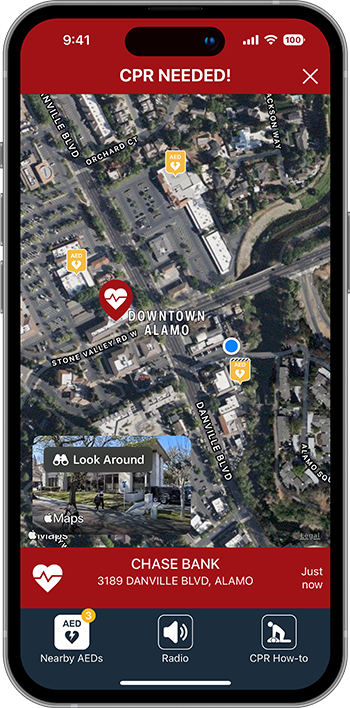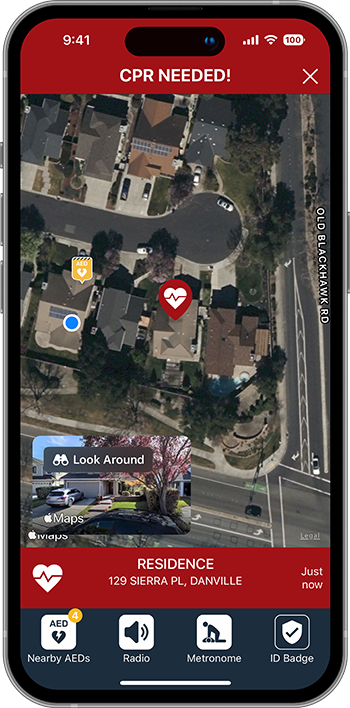Overview
Community First Responders
There’s power in your community—trained volunteers ready to help save more lives from sudden cardiac arrest. But how can you seize that potential and activate your citizens to change patient outcomes? The answer is PulsePoint.
Where adopted, PulsePoint Respond empowers everyday citizens to provide life‐saving assistance to victims of sudden cardiac arrest.
App users who have indicated they are trained in CPR and willing to assist in case of an emergency can be notified if someone nearby is in cardiac arrest. The location-aware application will alert users in the vicinity of the need for CPR simultaneous with the dispatch of advanced medical care. The app also directs these rescuers to the exact location of nearby AEDs.
Overview
PulsePoint Respond
THE CHAIN OF SURVIVAL IS ONLY AS STRONG AS WE MAKE IT
Create a culture of action in your community.
A CALL TO ACTION
Sudden cardiac arrest can happen to anyone, at any time, but PulsePoint Respond empowers CPR-trained citizens to help improve patient outcomes and save lives by reducing collapse-to-CPR and collapse-to-defibrillation times. And when citizens are more aware of and engaged with the health of their community, they become better partners with your agency—and a stronger link in your response efforts.
PROXIMITY TO VICTIM
For extremely time-sensitive emergencies like cardiac arrest, notifying community first responders that are in the immediate vicinity of an event, simultaneously with the conventional Fire/EMS response, offers the potential to improve outcomes. By expanding situational awareness beyond the purview of a traditional witnessed arrest radius, the opportunity to instantly draw skilled individuals, including off-duty health care professionals, grows, enabling critical life-sustaining BLS interventions to begin sooner and more often, and potentially of higher quality.
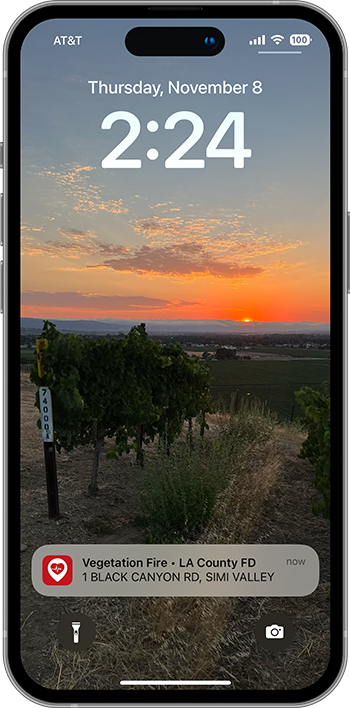
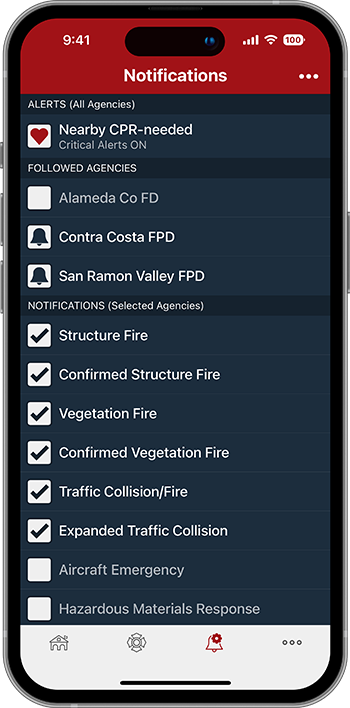
Overview
Public Interest Alerts
Improving situational awareness with PulsePoint can help build safer, stronger, and more resilient communities.
RISK AWARENESS
Public interest alerts allow community members to stay mindful of important incident activity that may be impactful. These informational notifications provide an early and automatic heads-up to local threats such as wildland fires, flooding and utility emergencies. Making the public aware of risks and helping them be prepared is an essential component of community risk reduction.
DAILY USEFULNESS IS KEY TO ENGAGEMENT
Users share the daily usefulness of PulsePoint with neighbors, family, and friends, and in turn, they help build and sustain a dynamic and reliable network of CPR-trained individuals.
Responder Types
Responder Types
PulsePoint Respond offers three responder types—Public CPR Responder, Registered CPR Responder, and Professional Responder. Deploying a combination of these responder types can maximize PulsePoint's community impact. The three responder types are detailed below, followed by a feature matrix to help illustrate the differences.
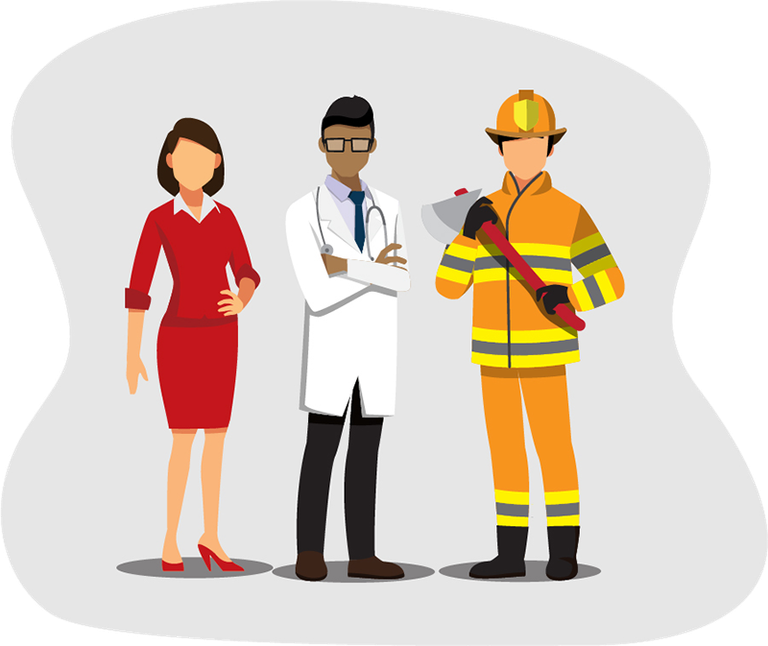
Public CPR Responder

Public CPR Responders are typically community members trained in CPR and automated external defibrillator (AED) use and willing to assist if an incident occurs near them. These community first responders are only notified of nearby cardiac arrest events occurring in public places. To promote daily app usefulness and encourage program participation, these users are shown a filtered list of emergencies occurring in the community and offered notifications of public interest events such as traffic collisions and wildland fires.
Registered CPR Responder

Registered CPR Responders are agency-invited members of the community with medical or rescue training, such as public safety retirees, CERT members, medical professionals, and residential security staff or residents with special neighborhood responsibilities. These community responders are alerted to all nearby cardiac arrest events, including private residences. With nearly 70% of cardiac arrest events occurring in the home, this difference is significant. Like Public CPR Responders, these users are shown a filtered list of emergencies occurring in the community.
Professional Responder
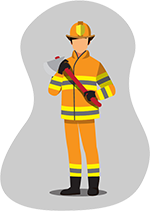
Professional Responders are active public safety employees, typically firefighters, paramedics, and law enforcement officers assigned Professional Responder status by their organization. Typically these employees respond and care for patients in residential settings while on duty. To encourage adoption, professional users are provided with specialized app capabilities for on-duty use. When off-duty, Professional Responders are alerted to all nearby cardiac arrest events in the jurisdiction.
Verified
PulsePoint on Firstnet
AHA Guidelines
American Heart Association Guidelines
The 2020 American Heart Association (AHA) Guidelines for Cardiopulmonary Resuscitation (CPR) and Emergency Cardiovascular Care (ECC) include updated CPR guidelines that direct emergency dispatch systems to use mobile technology to activate early bystander response in sudden cardiac emergencies. The PulsePoint Respond app, the North American standard in alerting willing bystanders to CPR-needed events, is currently in more than 4,400 communities and has built a network of more than three million subscribers.
In 2015, when the previous recommendations were released, approximately 350,000 adults in the United States experienced nontraumatic out-of-hospital cardiac arrest (OHCA) attended by emergency medical services (EMS) personnel. Despite recent gains, less than 40 percent of adults receive layperson-initiated CPR, and fewer than 12 percent have an automated external defibrillator (AED) applied before EMS arrival.1
According to the latest guidelines, "emergency dispatch systems should alert willing bystanders to nearby events that may require CPR or AED use through mobile phone technology (Class 1, LOE B-NR). Despite the recognized role of lay rescuers in improving OHCA outcomes, most communities experience low rates of bystander CPR and AED use. Mobile phone technology, such as text messages and mobile phone apps, is available to summon trained members of the general public to nearby events to assist in CPR and to direct those responders to the nearest AED. Notification of lay rescuers via a mobile phone app results in improved bystander response times, higher bystander CPR rates, shorter time to defibrillation, and higher rates of survival to hospital discharge."2
It’s encouraging to see the AHA incorporating innovative approaches, such as PulsePoint, in the effort to improve out-of-hospital cardiac arrest survival rates, said Dr. Michael Kurz, physician scientist at the Alabama Resuscitation Center and Immediate-Past Chair of the AHA Emergency Cardiac Care Subcommittee on Systems of Care. As countries build their mobile-alerting networks I expect they will experience improvements in bystander CPR rates, public AED use and overall survival gains.

1 Highlights of the 2020 American Heart Association Guidelines for CPR and ECC, pg. 4
2 Executive Summary, 2020 American Heart Association Guidelines for Cardiopulmonary Resuscitation and Emergency Cardiovascular Care, section 7.1
FAQs
Frequently Asked Questions
PulsePoint implementations are typically championed and led by local Fire/EMS agencies. If you are with a public safety agency we are well equipped to assist you through the process. Simply reach out to us at info@pulsepoint.org to get your community PulsePoint connected.
We also receive many inquiries directly from individuals interested in having PulsePoint available in their community. While it is the mission of our foundation to provide seamless PulsePoint coverage across the globe, this will obviously take time. PulsePoint must be integrated into the local emergency call center so that we can access incident data in real time.
Although we are working hard to make public safety agencies aware of PulsePoint, you can definitely help by expressing interest to your local fire chief, EMS official, and elected officials such as your mayor, council member or supervisor. A simple note, phone call or public meeting comment would ensure that they are aware of PulsePoint. Expressing your personal willingness to participate in improving local cardiac arrest survival rates through CPR and AED use would likely be well received and go a long way to help move things up in priority. We have found that City Hall does listen and is quite willing to bring PulsePoint to the community.
Download our factsheet or a sample advocacy letter PDF | Word.
We are adding PulsePoint-connected communities on an almost daily basis and look forward to adding your community in the very near future.
The costs associated with implementing PulsePoint Respond vary depending on agency size and dispatch environment. Please reach out to us for more information.
There is no cost to implement any aspect the PulsePoint AED Registry.
The abbreviations are the radio IDs of agency units, such as engines, chief officers and ambulances assigned to the incident. Colors and symbols are used to indicate their current dispatch status as shown here.
PulsePoint uses a standardized set of incident types normalized across all Public Safety Answering Points (PSAP) and Computer-aided Dispatch (CAD) system vendors. A complete list with descriptions/meanings is available here.
The Health Insurance Portability and Accountability Act (HIPAA) protects the privacy of individually identifiable health information. On a ‘CPR Needed’ notification, the app reports only an address and a business name, if available. Individually identifiable health information, such as name, birth date, or Social Security Number are not reported or known to the PulsePoint application. In addition, PulsePoint has retained Page, Wolfberg & Wirth, LLC to assist agencies understand legal issues related to the implementation of PulsePoint. PWW is well respected EMS law firm specializing in dispatch liability and HIPAA issues.
The PulsePoint app is a Location-Based Service (LBS) with the ability to make use of the geographical position of your mobile device. The LBS capabilities of the app allow you to see your current location relative to the incidents occurring around you. This is an optional feature that is not enabled by default – you must specially opt-in to utilize this functionality. In addition, if you opt-in to the CPR/AED notification, the PulsePoint server will store your current location for immediate reference during an emergency where you may be nearby. In this case, only the current location of your device is stored (no movement history is maintained) and your identity is never known to the PulsePoint application.
CPR today is very easy to perform and can be learned quickly in informal settings such as community street fairs, group training sessions, take-home DVD-based courses, or even by watching brief online videos. These types of training environments do not provide certificates of other forms of skill documentation. Automated External Defibrillators (AEDs) actually require no training to use. Therefore, there is no reason or even ability to verify that someone volunteering to help others with CPR or an AED has been formally trained. Learn how you can help save a life in this one-minute American Heart Association video showing Hands-Only CPR in action.
A CPR notification arrives as a critical push notification. This notification will be accompanied by a distinctive alert tone. Opening the notification will load the PulsePoint app. The screen will display your current location, the general reported location of the cardiac arrest victim, along with the location of nearby Automated External Defibrillators (AEDs). To receive a CPR Needed activation you must have the CPR notification type selected in the Settings Menu and you must be in the immediate vicinity of a reported cardiac arrest. Notification radiuses vary by jurisdiction.
Only about a third of Sudden Cardiac Arrest victims receive bystander CPR, and public access Automated External Defibrillators (AEDs) are used less than 3% of the time when needed and available. The current situation is far too few bystander rescuers – not too many. The goal of the app is to engage additional trained responders in these lifesaving acts. If this situation was to truly materialize in the future it would be a major success and the radius of the notification could be reduced.
For the app to be activated someone must first call the local emergency number (such as 911) to begin a normal public safety response. This means that the victim is likely not alone when the CPR/AED notifications are made. In addition, lay responders are only activated for incidents occurring in public places furthering the likelihood that others will be present (only off-duty professional responders are notified of residential cardiac arrest incidents). Also, since the app is only activated on devices in the immediate vicinity of the victim, a “Bad Samaritan” would have little opportunity to be in the right place at the right time.
The app aims to notify those essentially within walking distance of the event. However, this distance is configurable based on local needs and response time experience. Higher population densities usually warrant a smaller notification radius. Likewise, rural response times may necessitate a larger notification area.
It is normal to feel a wide-range of emotions after assisting with a medical emergency. If you would like additional support, please visit our citizen responder mental health resources page.
The purpose of the Good Samaritan Law is to protect individuals that assist a victim during a medical emergency. Most Good Samaritan laws are created specifically for the general public. The law assumes that there is no medically trained person available to assist the victim. Since the Good Samaritan typically does not have medical training, the law protects him or her from being liable from injury or death caused to the victim during a medical emergency. A general layperson is protected under the Good Samaritan laws as long as he or she has good intentions to aid the victim to the best of his or her ability during a medical emergency. Since each state law has specific guidelines, and this text does not provide a worldwide view of this matter, you should familiarize yourself with the laws or acts applicable to you. A typical example of the wording appears below.
“…a person, who, in good faith, lends emergency care or assistance without compensation at the place of an emergency or accident, and who was acting as a reasonable and prudent person would have acted under the circumstances present at the scene at the time the services were rendered, shall not be liable for any civil damages for acts or omissions performed in good faith.”
With dispatchers making rapid over-the-telephone assessments of patients based on the observations of untrained callers, an incorrect determination can be made. For example, such a situation could occur with someone who has just had a grand mal seizure, passed out from too much alcohol, or has a very high blood sugar level. However, if you tried to do CPR on such an individual he or she would probably moan and possibly even try to push you away. Also, an AED would not deliver a shock to a person in any condition where an effective heartbeat was present.
No, this is not a supported configuration.
Although PulsePoint is commonly thought of as the “CPR app,” its importance and utility to the community goes much deeper. PulsePoint keeps your community informed of emergency activity in real time. Residents use this information on a daily basis to know when there is an accident on their commute, or if the smoke they smell is an approaching wildfire. They’ll share the routine usefulness of the app with neighbors, family and friends – and in turn they’ll help build and sustain an engaged and reliable network of CPR-trained individuals. This combination is crucial to achieving broad community adoption and sustaining a lifesaving program.
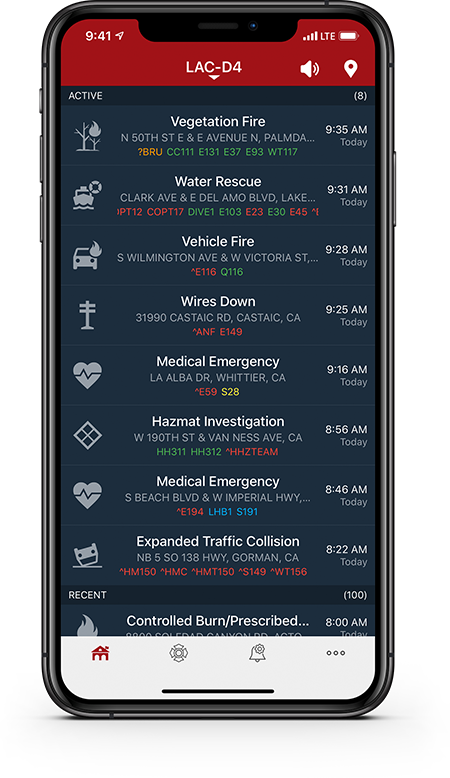
PROXIMITY TO VICTIM
Achieving the goal of PulsePoint responders routinely beginning CPR and retrieving a nearby AED prior to the arrival of advanced care requires a significant number of local app users. Communities with a high density of app users greatly improve the odds of having at least one responder within the cardiac arrest activation radius. An app experience that provides daily usefullness for the user is the most important factor in achieving meaningful engagement rates.
CONSISTENT END USER EXPERIENCE
We encourage you to download PulsePoint Respond, follow a few neighboring agencies, and test drive the app as it was designed to be used. You’ll quickly notice that all PulsePoint-connected communities look very similar. That’s because PulsePoint is built and deployed in the cloud, on a single codeline, with every agency in the network on the same version. This allows us to implement and support broadly and inexpensively but also limits our ability to customize for an individual agency.
USER ENGAGEMENT AND RETENTION
PulsePoint Respond configured to only present nearby CPR-needed events in public places would display a blank screen essentially 100% of the time. Our experience with early deployments of this nature was poor on many fronts – most importantly extremely low user engagement and retention, and steadily declining activations due to a diminishing number of available responders. This also created support issues with users not confident that the system was even working.
USER EXPECTATIONS
Our in-app settings and options, marketing materials, user guides and videos, website, app store descriptions, etc. all assume a typical deployment. Nothing would appear or work as described and presented. When the foundation announces new features, they wouldn’t be available in your community – frustrating users on every update cycle.
Real time incident information provides users with confidence that the app is reliably connected to the local dispatch system. It also provides dependable monitoring of the local interface as failures and anomalies are quickly noticed and reported.
TECHNICAL CHALLENGES
Apps that are never brought to the foreground are difficult to keep running properly as battery-efficient mobile device operating systems equate infrequent use to little importance to the user. Foreground usage is fundamental to maintaining access to key resources such as location services. Despite the sea of choice for mobile apps, in real life people tend to reinstall and continue use of only a few that provide them daily utility.
RETURN ON INVESTMENT
The mission of the non-profit PulsePoint Foundation is to help communities improve bystander CPR engagement and public AED use through the use of an innovative mobile app. However, without a sufficiently large number of app users, the value of PulsePoint is limited and likely not a good use of funds and resources. We are confident that the funds allocated for a “CPR-needed only” deployment of PulsePoint would have more impact if directed toward traditional citizen CPR training and public AED programs. Agencies are welcome to use PulsePoint AED and its associated registry and interfaces in conjunction with these initiatives indefinitely and at no cost.
Typically PulsePoint queries public data sources such as the Residential/Commercial Indicator (RDI) from the USPS (PulsePoint uses the USPS address validation API from Smarty along with other sources such as the Google Places API to make this determination.
Each agency supplies their own audio feed for use in the app (or can choose to use an existing public feed if available). Originating an official agency feed requires about $400 in hardware and a free account on Broadcastify. See complete setup instructions on our Streaming Radio Channel page. Streaming radio feeds are optional.
Yes, the PulsePoint Foundation is a 501(c)(3) public non-profit corporation based in California.
Testimonials
Take Their Word For It

"Your app gave my one-month-old son another fighting chance at life. Your app gives me faith in humanity by exposing the heroes amongst us who don’t hesitate to commit great selfless acts."
Michael Garrison | Father

"As I’ve experienced in my own city, PulsePoint not only involves our residents in critical time-sensitive medical emergencies, but also strengthens bonds in our community and creates opportunity for positive interaction with our emergency responders."
Tom Jenkins | Fire Chief, IAFC Past President

“The chances of professional rescuers being able to respond to a scene in less than four minutes are unrealistic.”
Nancy Capelle | SCA Survivor

“Truly a revolutionary app. An incredible idea. An amazing idea. Perhaps the best startup idea I have heard all year.”
Jason Calacanis | This Week in Startups

"Pretty sure this is the single coolest app I have ever seen."
Mack Flavelle | Tapstream

"One of the most innovative and compelling apps I have ever seen."
Rod Sinks | Mayor of Cupertino

"Lots of tech companies say they will change the world but I guarantee you this one really has."
Scott McGrew | NBC Universal

“This is one piece of a menu of options that is going to improve response times.”
Ralph Terrazas | Fire Chief, LAFD

“The future is already here. It’s just not evenly distributed.”
Brad Kreit | Institute for the Future

"An unbelievable story out of Spokane, Washington is showing us just how amazing new technology can be when used for good."
Matt Johnson | Business Insider

“The greater the number of participants, the greater the chance that you or a loved one might be saved one day. I'm living proof that it's possible to be brought back from the dead.”
Steve Lopez | LA Times

“San Diego is again on health care’s leading edge by adopting this technology. It is going to allow us as citizens to help one another in previously unimaginable ways. Get trained, download this tool and use it.”
Kevin Faulconer | Mayor of San Diego
